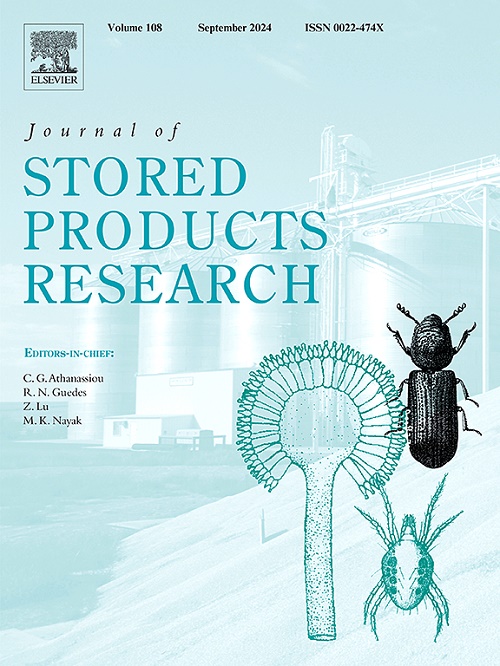Multi-factor fungal growth prediction and optimal control during grain storage based on RF error compensation
IF 2.7
2区 农林科学
Q1 ENTOMOLOGY
引用次数: 0
Abstract
Grain storage security is primarily threatened by fungal growth, which produces mycotoxins that contaminate the stored grain and compromise its quality. Predicting the growth trends of fungi during storage is essential for ensuring the safety of grain reserves. Traditional fungal growth prediction models often rely on single-factor analysis, which leads to low accuracy. This paper proposes a multi-factor model for predicting fungal growth in grain storage, taking into account the effects of temperature and moisture. By adjusting current environmental conditions, we can predict and control the future growth rate of fungi, thereby enhancing grain storage security. However, while stricter regulation of environmental factors can reduce fungal growth, it also increases control costs. Therefore, it is economically prudent to minimize the extent of environmental adjustments, striking a balance between effectiveness and cost-efficiency. To address these challenges, we have refined the fungal growth model by incorporating the effects of temperature and moisture, transforming the model from colony diameter growth to fungal spore count, and utilizing a discrete model to predict both colony diameter and spore number. Finally, we employ a Random Forest (RF) model to correct prediction errors, optimizing control strategies by minimizing the tracking deviation of state variables and the cumulative increment of control variables.
求助全文
约1分钟内获得全文
求助全文
来源期刊
CiteScore
5.70
自引率
18.50%
发文量
112
审稿时长
45 days
期刊介绍:
The Journal of Stored Products Research provides an international medium for the publication of both reviews and original results from laboratory and field studies on the preservation and safety of stored products, notably food stocks, covering storage-related problems from the producer through the supply chain to the consumer. Stored products are characterised by having relatively low moisture content and include raw and semi-processed foods, animal feedstuffs, and a range of other durable items, including materials such as clothing or museum artefacts.

 求助内容:
求助内容: 应助结果提醒方式:
应助结果提醒方式:


